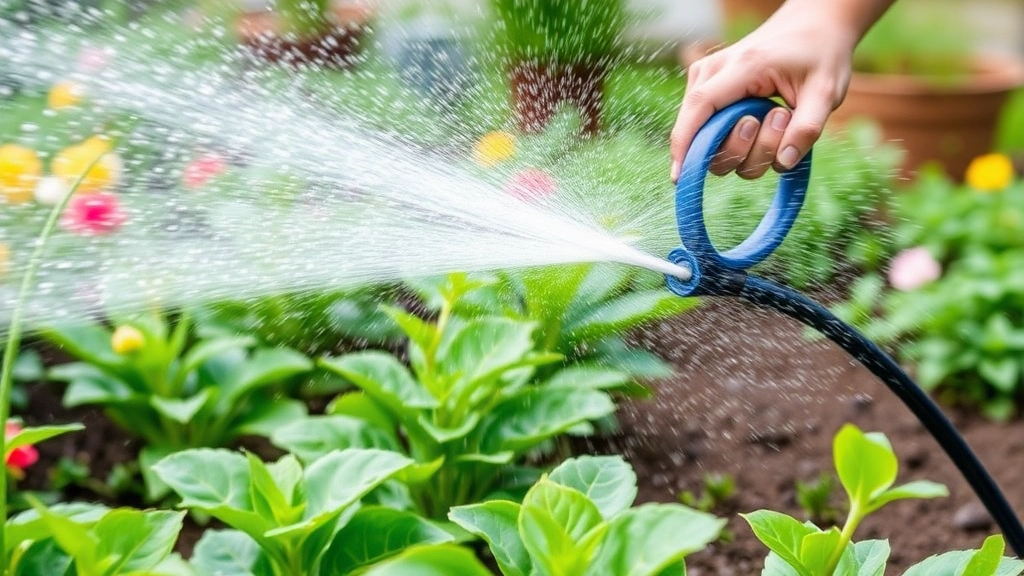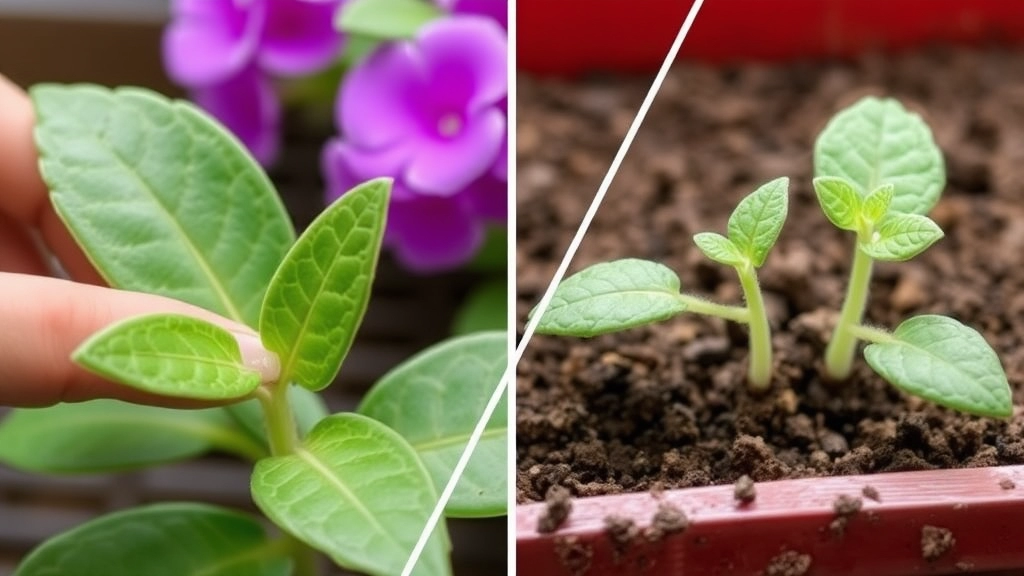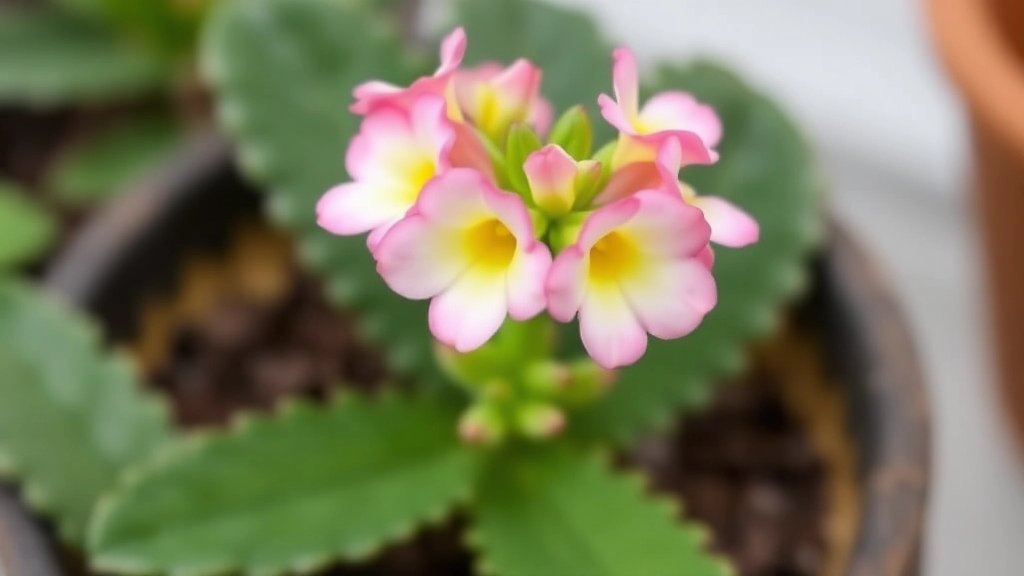Mastering Kalanchoe Panda Plant Care
Looking to master Kalanchoe Panda Plant care? You’ve come to the right place. This guide covers everything from ideal light conditions to propagation methods, ensuring your Panda Plant thrives. Whether you’re a beginner or a succulent enthusiast, these tips will help you keep your Kalanchoe tomentosa healthy and vibrant.
Light Conditions
First, let’s talk about light. Panda Plants love bright, indirect sunlight. Place them near a window where they can soak up plenty of light without getting scorched.
Watering Tips
Next, watering is crucial—allow the soil to dry out completely between waterings to avoid root rot. Stick around as we dive into soil types, temperature needs, and more to keep your Panda Plant in top shape.
Ideal Light Conditions for Panda Plants
When it comes to growing healthy panda plants (Kalanchoe tomentosa), one of the most common concerns is ensuring they receive the right amount of light.
Why Light Matters
Panda plants thrive in bright, indirect light. Too much direct sunlight can scorch their delicate leaves, while too little can hinder their growth.
Watering Techniques: How to Avoid Overwatering

So, you’ve got your lovely Panda Plant, Kalanchoe tomentosa, and you’re probably wondering, “How much water does this beauty really need?”
Overwatering is one of the most common mistakes new plant parents make, and it can lead to root rot faster than you can say “succulent.”
Tips to Avoid Overwatering:
- Check the Soil: Always feel the top inch of the soil. If it’s dry, it’s time to water. If it’s still moist, hold off for a few days.
- Use Well-Draining Pots: Make sure your pot has drainage holes. This helps excess water escape, preventing soggy roots.
- Water Sparingly: In the growing season (spring and summer), water every two weeks. In winter, cut back to once a month.
- Observe Your Plant: Yellowing leaves? That’s a sign of too much water. If the leaves start to wrinkle, it might be thirsty.
- Watering Technique: When you do water, do it thoroughly. Let water run through the drainage holes, but empty the saucer after 30 minutes to avoid standing water.
I remember when I first got my Panda Plant, I was so excited that I watered it every few days. It didn’t take long for the poor thing to start drooping!
Choosing the Right Soil for Kalanchoe Tomentosa
When it comes to nurturing your Kalanchoe Tomentosa, selecting the right soil is crucial for its overall health and growth.
Many plant enthusiasts often wonder, “What type of soil is best for my panda plant?”
To ensure your panda plant thrives, consider the following key points:
- Well-Draining Soil: Kalanchoe Tomentosa prefers a soil mix that allows excess water to escape quickly. This prevents root rot, which is a common issue for succulent plants.
- Cactus or Succulent Mix: A pre-made cactus or succulent soil mix is ideal. These mixes are specifically formulated to provide the right balance of drainage and moisture retention.
- DIY Soil Mix: If you prefer to create your own mix, combine the following:
- 50% potting soil
- 25% perlite
- 25% coarse sand
- pH Level: Aim for a slightly acidic to neutral pH (around 6.0 to 7.0). This helps the plant absorb nutrients effectively.
- Nutrient-Rich Additions: Consider incorporating organic matter such as compost or worm castings, but use them sparingly. Too much can retain moisture, which is not ideal for Kalanchoe Tomentosa.
For a more comprehensive understanding of how to care for your panda plant, check out our complete care guide for Kalanchoe Tomentosa. Additionally, if you’re interested in propagating this beautiful succulent, our step-by-step propagation guide will be incredibly helpful.
Temperature and Humidity Requirements for Optimal Growth

Are you struggling to keep your Panda Plants thriving? Understanding their temperature and humidity needs is crucial for fostering optimal growth.
Panda Plants, or Kalanchoe tomentosa, flourish in specific environmental conditions. Here’s what you need to know:
Ideal Temperature Range
- Daytime Temperatures: Aim for 20-25°C (68-77°F).
- Nighttime Temperatures: A slight drop to 15-18°C (59-65°F) is ideal.
- Avoid Extremes: Temperatures below 10°C (50°F) can stress the plant.
Humidity Levels
- Low Humidity Preference: Panda Plants prefer dry air, thriving in humidity levels around 30-50%.
- Avoid High Humidity: Excess moisture can lead to fungal issues.
Tips for Maintaining Conditions
- Location Matters: Place your Panda Plant near a window with indirect sunlight.
- Use a Thermometer and Hygrometer: Monitor your plant’s environment to ensure it stays within the ideal range.
- Adjust Seasonally: Be mindful of changes in temperature and humidity with the seasons.
Fertilizing Schedule and Nutrient Needs
When caring for Kalanchoe tomentosa, or panda plants, many of us wonder about the best way to nourish them. A well-planned fertilizing schedule can make a significant difference in their growth and overall health.
Understanding Nutrient Needs
Panda plants thrive in relatively low-nutrient environments, so it’s essential to select the right type of fertiliser. Here’s what you should consider:
- Type of Fertiliser: Use a balanced, water-soluble fertiliser, ideally with an NPK ratio of 10-10-10 or a specialised succulent mix.
- Frequency: Fertilize every 4-6 weeks during the growing season (spring and summer). Reduce or stop fertilisation in autumn and winter when the plant is dormant.
- Dilution: Always dilute the fertiliser to half the recommended strength to prevent nutrient burn.
Signs Your Panda Plant Needs Fertiliser
Look out for these signs to determine if your plant is craving nutrients:
Propagation Methods: Leaf Cuttings and Seed Germination

So, you’re looking to expand your collection of Panda Plants? Great choice! Propagating Kalanchoe tomentosa can be both fun and rewarding.
Leaf Cuttings
One of the easiest ways to propagate your Panda Plant is through leaf cuttings. Here’s how to do it:
- Select a Healthy Leaf: Choose a plump, healthy leaf from your parent plant. The more vibrant, the better!
- Cut the Leaf: Use clean, sharp scissors to snip the leaf from the stem. Aim for a clean cut to avoid damaging the plant.
- Let it Callous: Place the leaf in a dry, warm spot for a few days. This allows the cut end to callous over, reducing the risk of rot.
- Plant the Leaf: Once it’s calloused, place the leaf on top of well-draining soil. You don’t need to bury it deep; just lay it flat.
- Water Sparingly: Mist the soil lightly, but avoid soaking it. Keep it just moist enough to encourage roots to form.
Seed Germination
If you’re feeling adventurous, you can also propagate Panda Plants from seeds. Here’s a simple guide:
- Gather Seeds: If your plant flowers, collect the seeds once they’re mature.
- Prepare Soil: Use a light, well-draining soil mix. A seed-starting mix works wonders.
- Sow the Seeds: Sprinkle the seeds on the surface of the soil. Don’t bury them too deep; they need light to germinate.
- Moisture is Key: Lightly mist the surface to keep it moist but not soggy.
- Warmth and Light: Place the pot in a warm spot with indirect sunlight. Patience is essential; germination can take a few weeks.
Common Pests and How to Treat Them
As we delve deeper into caring for your Panda Plant, it’s essential to address a common concern: pests. Many plant owners worry about their beloved Kalanchoe Tomentosa falling victim to these unwanted guests.
Signs of Overwatering and How to Fix Root Rot
So, you’ve been nurturing your panda plant, but something doesn’t feel right. Maybe the leaves are drooping, or they’ve started to turn a funky yellow.
Overwatering can be a sneaky culprit. Here’s how to spot the signs:
- Yellowing Leaves: If the leaves look like they’re losing their vibrant green, it’s a red flag.
- Soft, Mushy Stems: A healthy stem should feel firm. If it’s squishy, you might be in trouble.
- Wilting: This might seem counterintuitive, but overwatered plants can wilt just like thirsty ones.
- Foul Odour: If your plant starts to smell off, that’s a sure sign of root rot.
Now, if you suspect your panda plant is suffering from overwatering, don’t panic! Here’s what you can do to rescue it:
- Stop Watering: Give it a break. Let the soil dry out completely.
- Check the Roots: Gently remove the plant from its pot and inspect the roots. If they’re brown and mushy, you’ve got root rot.
- Trim the Bad Roots: Use clean scissors to cut away the rotten parts. Don’t be shy; it’s necessary for your plant’s health.
- Repot with Fresh Soil: Choose a well-draining soil mix. This will help prevent future issues.
- Adjust Your Watering Routine: Make sure you’re watering only when the top inch of soil feels dry.
Taking these steps can help you revive your panda plant and get it back on track. For more detailed tips, you can refer to our Kalanchoe Panda Plant care guide. If you’re dealing with other varieties, our ultimate guide to Variegated Kalanchoe care might be helpful.
FAQs: Kalanchoe Panda Plant Care
How often should I water my Panda Plant?
Water your Panda Plant every two weeks during the growing season (spring and summer) and reduce to once a month in winter. Always check the top inch of soil; if it’s dry, it’s time to water.
What are the signs of overwatering?
Yellowing leaves are a common sign of overwatering. If the leaves start to wrinkle, it might indicate that the plant is thirsty.
What type of pot is best for a Panda Plant?
Use a well-draining pot with drainage holes to allow excess water to escape, preventing soggy roots.
What are the ideal temperature conditions for a Panda Plant?
Panda Plants thrive in daytime temperatures of 20-25°C (68-77°F) and nighttime temperatures of 15-18°C (59-65°F). Avoid temperatures below 10°C (50°F).
How much humidity does a Panda Plant need?
Panda Plants prefer low humidity levels, around 30-50%. High humidity can lead to fungal issues.
Where should I place my Panda Plant for optimal growth?
Place your Panda Plant near a window with indirect sunlight. Use a thermometer and hygrometer to monitor the environment and adjust seasonally.
How can I propagate my Panda Plant through leaf cuttings?
Select a healthy leaf, cut it with clean scissors, let it callous over for a few days, and then place it on well-draining soil. Mist the soil lightly to encourage root formation.
Can I propagate Panda Plants from seeds?
Yes, you can. Collect mature seeds from your plant, use a light, well-draining soil mix, sprinkle the seeds on the soil surface, and keep it moist. Place the pot in a warm, indirect sunlight spot. Germination can take a few weeks.
References
-
Kalanchoe Plant Care – Gardening Know How
-
How to Grow Panda Plant (Kalanchoe Tomentosa) – The Spruce
-
Panda Plant (Kalanchoe Tomentosa) – House Plants Expert
